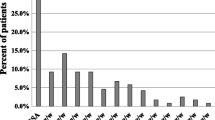Abstract
Objective: The influence of either orally administered S-benzoylthiamine-O-monophosphate (benfotiamine) or thiamine nitrate on the thiamine status was tested in a randomised, two-group comparison study in 20 end-stage renal disease (ESRD) patients. Main outcome measures were the pharmacokinetics of thiamine diphosphate (TDP) in blood, the in vitro erythrocyte transketolase activity, its activation coefficient (α-ETK) and the TDP concentration in erythrocytes.
Methods: After ingestion of a single dose of either 100 mg thiamine nitrate (corresponding to 305 μmol thiamine) or 100 mg benfotiamine (corresponding to 214 μmol thiamine), the blood levels of thiamine phosphate esters were analysed by means of high-performance liquid chromatography for a 24-h period. The TDP concentration in erythrocytes was calculated using the haematocrit and TDP concentration in blood. Erythrocyte transketolase activity and α-ETK were measured before and 10 h after administration. The pharmacokinetics of TDP in blood were compared with healthy subjects of other studies retrieved from database query.
Results: Regarding the blood concentrations of TDP, the patients with ESRD had a 4.3 times higher area under the concentration–time curve after benfotiamine administration than after thiamine nitrate. After benfotiamine administration, the peak plasma concentration of TDP exceeded that in healthy subjects by 51%. In the ESRD patients, after 24 h, the mean TDP concentration in erythrocytes increased from 158.7 ± 30.9 ng/ml initially to 325.8 ± 50.9 ng/ml after administration of benfotiamine and from 166.2 ± 51.9 ng/ml to 200.5 ± 50.0 ng/ml after thiamine nitrate administration. The ratio between the maximum erythrocyte TDP concentration and basal concentration was 2.66 ± 0.6 in the benfotiamine group and 1.44 ± 0.2 in the group receiving thiamine nitrate (P < 0.001). After 24 h, it was 2.11 ± 0.4 and 1.23 ± 0.2, respectively. The transketolase activity increased from 3.54 ± 0.7 μkat/l initially to 3.84 ± 0.6 μkat/l after benfotiamine intake (P=0.02) and from 3.71 ± 0.8 μkat/l to 4.02 ± 0.7 μkat/l after thiamine nitrate intake (P=0.08). Likewise, α-ETK decreased from initially 1.10 ± 0.07 to 1.04 ± 0.04 (P=0.04) and from 1.12 ± 0.05 to 1.08 ± 0.06 (P=0.09). After 24 h, the phosphorylation ratio in whole blood decreased from 12.9 ± 6.9 initially to 5.6 ± 3.2 after benfotiamine administration (P=0.02) and from 13.5 ± 7.3 to 9.0 ± 4.8 (P=0.03) after administration of thiamine nitrate. No correlation between erythrocyte TDP concentration and transketolase activity and/or α-ETK was observed in ESRD patients, either before or 10 h after administration.
Conclusion: Compared with thiamine nitrate, the oral administration of benfotiamine leads to higher TDP concentrations in erythrocytes accompanied with a significant improvement of the erythrocyte transketolase activity in ESRD patients.
Similar content being viewed by others
Author information
Authors and Affiliations
Additional information
Received: 4 October 1999 / Accepted: 15 March 2000
Rights and permissions
About this article
Cite this article
Frank, T., Bitsch, R., Maiwald, J. et al. High thiamine diphosphate concentrations in erythrocytes can be achieved in dialysis patients by oral administration of benfotiamine. E J Clin Pharmacol 56, 251–257 (2000). https://doi.org/10.1007/s002280000131
Issue Date:
DOI: https://doi.org/10.1007/s002280000131




